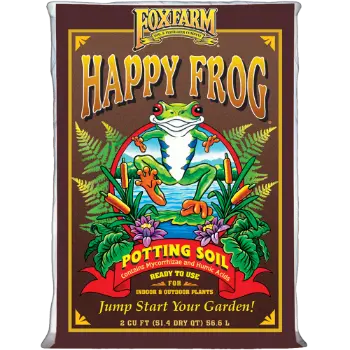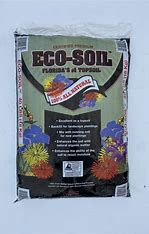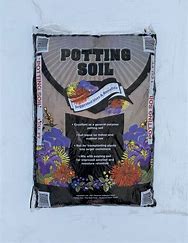What does mulching do for your garden? Many gardeners struggle with constant watering, stubborn weeds, and protecting their soil from extreme temperatures. Mulch gives you a simple solution that works for these common garden problems.
Your soil gets a protective barrier from mulch that helps keep moisture in and cuts down watering needs by a lot. A 3-4 inch layer of mulch stops weeds and blocks new weed seeds from growing. The mulch also keeps soil temperature steady to shield your plants’ roots from both hot and cold weather. Both organic and inorganic mulches help prevent soil erosion and make garden beds look better. Organic mulches are even better because they break down to feed your soil with nutrients that help your plants grow.
This piece will tell you everything about mulching plants. You’ll learn about different mulch types that are accessible to more people, the best times to add mulch, and how to do it right. Good mulching techniques are a great way to get lasting benefits for your garden’s health.
What is mulch and why does it matter?
Mulch acts as nature’s insulating blanket for your garden when placed on the soil surface. This protective layer of material plays a significant role in practical gardening and landscape design.
Understanding the purpose of mulch
Mulch creates a protective shield between soil and atmosphere. Your garden’s soil moisture increases by up to 35% with mulch. The soil stays warmer during winter and cooler in summer. Mulch stops weeds from growing, prevents soil erosion, reduces soil compaction, and makes landscapes look better. Nature uses a similar process in forests, where fallen organic matter breaks down slowly to make the soil richer.
Organic vs inorganic mulch explained
Organic mulches come from materials that were once living and break down over time. These include:
- Wood chips, bark, and sawdust
- Compost, straw, and grass clippings
- Pine needles and leaves
Your soil gets better as organic mulches decompose and release nutrients. These mulches attract earthworms that help aerate the soil by digging tunnels.
Inorganic mulches use non-living materials like gravel, stone, landscape fabric, and plastic sheeting. They last longer and need fewer replacements, but they don’t feed your soil. These options work well for long-term use but miss the soil-improving benefits of organic materials.
How does mulch work in the garden?
Several mechanical and biological processes make mulch effective. Light can’t reach weed seeds through the physical barrier mulch creates, which stops them from sprouting. Water stays in the soil longer and rainfall causes less damage, which prevents erosion and keeps soil from getting too compact.
Organic mulches break down and release “black, gooey liquid” called humates. These humates coat soil particles and bind them together, which creates better soil structure and helps water soak in. This process helps beneficial organisms thrive, from tiny bacteria to earthworms, creating a healthy soil ecosystem.
The right mulch depth makes a big difference. Your organic mulch should be 2-3 inches deep (sometimes up to 4 inches) for the best weed control and moisture retention. Coarser materials might need more depth. When applied properly, mulch protects your soil and helps keep it healthy.
The key benefits of mulching plants
My garden experience shows how mulching can turn regular gardens into thriving ecosystems. What does mulching do beyond simple soil covering? Let’s take a closer look at five benefits that make mulching a must-have gardening practice.
Moisture retention and reduced watering
Mulch creates a protective barrier that cuts down water evaporation from soil. Research shows mulching can reduce soil moisture loss by up to 40%, so you won’t need to water as often. A layer of organic mulch protects soil from wind and sun exposure, which helps keep moisture levels steady during hot, dry spells. This water-saving feature works great in dry regions because mulched soil keeps water near plant roots longer, giving them extended access to hydration.
Weed suppression and soil protection
A 3-4 inch mulch layer smothers unwanted plants by blocking the sunlight weeds need to grow. Studies show proper mulching can cut weed populations by up to 90%, which stops them from stealing nutrients and water. Newspaper layers under organic mulch offer extra protection by creating a barrier most weeds can’t break through.
Temperature regulation for root health
Mulch works like a natural blanket for soil and keeps temperatures more stable despite weather changes. It keeps soil cool in summer by blocking direct sunlight, and prevents early freezing in winter that could hurt root systems. This temperature control really helps in greenhouses, where studies found organic mulching reduced daily soil temperature swings by 1.6-2.1°C.
Improved soil structure and nutrients
Organic mulches break down and release nutrients into the soil, which boosts fertility. This breakdown helps good soil microorganisms that improve air flow, drainage, and nutrient access. Research shows mulched areas have much higher microbial diversity and better community structure. This creates a rich soil ecosystem where plants grow stronger.
Erosion control and disease prevention
Mulch is a big deal as it means that soil erosion drops by slowing water runoff and softening rainfall’s impact. Studies show just 0.6 inches of mulch can cut erosion by about 86%, which saves precious topsoil. Mulch’s protective layer stops rain from splashing disease spores onto plants. On top of that, it prevents soil from getting packed down by foot traffic, which keeps air pockets that roots need to grow healthy.
Choosing the right mulch for your garden
The right mulch choice depends on your garden’s needs and the types of plants you grow. In fact, each area of your garden might need a different variety of mulch.
Best mulch types for vegetables, flowers, and trees
Straw and grass clippings make great mulch for vegetable gardens, but grass clippings need to dry first so they don’t mat down. Plants that love acidic soil, like blueberries, thrive with pine straw mulch. Finely shredded hardwood or conifer bark looks natural under trees and shrubs and breaks down slowly. Shredded bark works great in flower beds and adds nutrients as it decomposes.
When to avoid certain mulch materials
Fresh wood chips can temporarily reduce soil nitrogen, so it’s best to avoid them. Sawdust and pure compost don’t work well alone because their fine texture restricts oxygen and water movement. Your vegetable garden needs mulch free from dyes or recycled construction materials. Tree trunks should never have “mulch volcanoes” around them since this attracts insects and disease.
Natural vs dyed mulch: what to know
Natural mulches help improve soil structure as they break down over time. Dyed mulches usually come from recycled pallets and construction waste. Most manufacturers use vegetable dyes or carbon black, but the real issue isn’t the color – it’s possible contaminants in recycled wood.
Sustainable and pet-safe options
Pine bark nuggets provide a safe, environmentally responsible option that dogs can be around. Cedar mulch keeps insects away and stays safe for pets. Dog owners should avoid cocoa bean shells since they contain theobromine, which can harm dogs. Rubber mulch might last long, but it’s best avoided because it releases chemicals into the soil.
How to apply mulch the right way
The right mulch application timing and technique can help your plants thrive instead of struggle. My experience shows that these details make a real difference in your garden’s success.
When to mulch: seasonal timing tips
Spring mulching works best in mid-to-late April, once the soil warms up but weeds haven’t sprouted yet. This helps your garden prepare for growing season and keeps weeds at bay. The best time to mulch in fall runs from late September to October, which protects your plants from winter damage. Your mulch will work better if you apply it after light rain since it helps lock in moisture. Stay away from mulching right before big storms or on very windy days.
How thick should mulch be?
Most garden areas need mulch 2-3 inches deep. Here’s a quick breakdown:
- Flower beds: 2-3 inches
- Trees and shrubs: 3-4 inches
- Vegetable gardens: 1-2 inches
Poorly drained soils need thinner layers to avoid water buildup. Too much mulch blocks oxygen from reaching roots and can suffocate plants.
Avoiding common mistakes like mulch volcanoes
“Volcano mulching” causes the most damage by piling mulch against tree trunks, which traps moisture and leads to rot and disease. You should remove old weeds before adding new mulch, or they’ll just push through. Also, don’t put mulch right on top of seedlings – they need space to emerge.
Mulching around trees, shrubs, and seedlings
Leave 6 inches of space between mulch and tree trunks and 3-5 inches from shrub stems. The mulch should reach out to the drip line if possible. New trees need special care – avoid covering their root ball with mulch because it might block water and dry them out.
Tips for reapplying and maintaining mulch
Look at your current mulch depth before adding more – extra layers waste money and can hurt your plants. Break up any matted layers in old mulch with a rake before adding fresh material. Adding one inch of new mulch usually works for yearly updates. Replace organic mulches that have broken down a lot each spring.
Conclusion
Mulching is one of the most effective practices any serious gardener can adopt. A simple layer of material provides many benefits beyond decoration. From preserving soil moisture to reducing weed growth by up to 90%, mulch acts as nature’s protective blanket.
Your specific garden needs determine the choice between organic and inorganic mulch. Organic options like wood chips and compost break down gradually and add nutrients to your soil while improving its structure. Inorganic materials such as gravel or landscape fabric provide long-lasting protection without needing frequent replacement.
Proper application makes a real difference. Most garden areas thrive with a 2-3 inch layer, though ideal depth varies by plant type. Mulch should never touch tree trunks and plant stems directly to avoid rot and disease.
Spring application works best after soil warms but before weeds emerge. This timing gives your garden maximum protection during the growing season. Fall mulching helps protect roots through winter.
Mulching is a straightforward solution that delivers impressive results for water conservation, weed control, and garden esthetics. Few gardening practices provide such benefits with minimal effort. Start mulching the right way today and you’ll see healthier plants, better soil, and spend less time on watering and weeding.
FAQs
Q1. What are the main benefits of mulching? Mulching offers several key benefits for your garden. It helps retain soil moisture, reducing the need for frequent watering. It also suppresses weed growth, regulates soil temperature, improves soil structure, and prevents erosion. Additionally, organic mulches break down over time, enriching the soil with nutrients.
Q2. How thick should I apply mulch? The ideal mulch thickness depends on the area you’re covering. For most garden areas, maintain a 2-3 inch layer. Flower beds typically need 2-3 inches, trees and shrubs benefit from 3-4 inches, while vegetable gardens require only 1-2 inches. Be careful not to apply mulch too thickly, as this can prevent oxygen from reaching plant roots.
Q3. When is the best time to apply mulch? The optimal time for mulching is mid-to-late April for spring application, after the soil has warmed but before weeds emerge. For fall application, aim for early to mid-fall (late September to October) to protect plants from winter stress. It’s best to apply mulch after a light rainfall to help preserve soil moisture.
Q4. Are there any plants that shouldn’t be mulched? While most plants benefit from mulching, it’s important to avoid mulching directly over seedlings as it can smother emerging plants. Also, be cautious when mulching around plants that prefer drier conditions or are prone to root rot. Always keep mulch away from direct contact with tree trunks and plant stems to prevent moisture-related issues.
Q5. What’s the difference between organic and inorganic mulch? Organic mulches, such as wood chips, bark, compost, and straw, decompose over time, improving soil structure and adding nutrients. Inorganic mulches, like gravel or landscape fabric, don’t break down but provide longer-lasting protection. While both types help with moisture retention and weed suppression, organic mulches offer the additional benefit of enriching the soil as they decompose.







